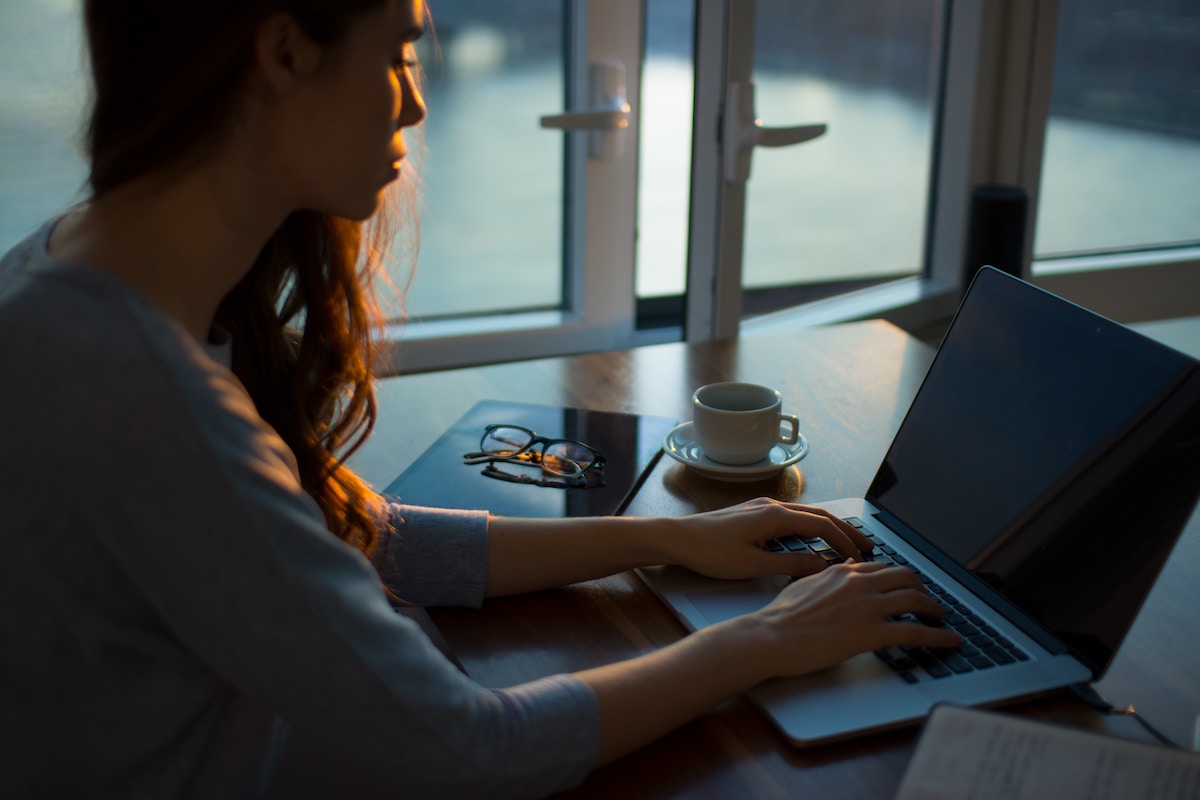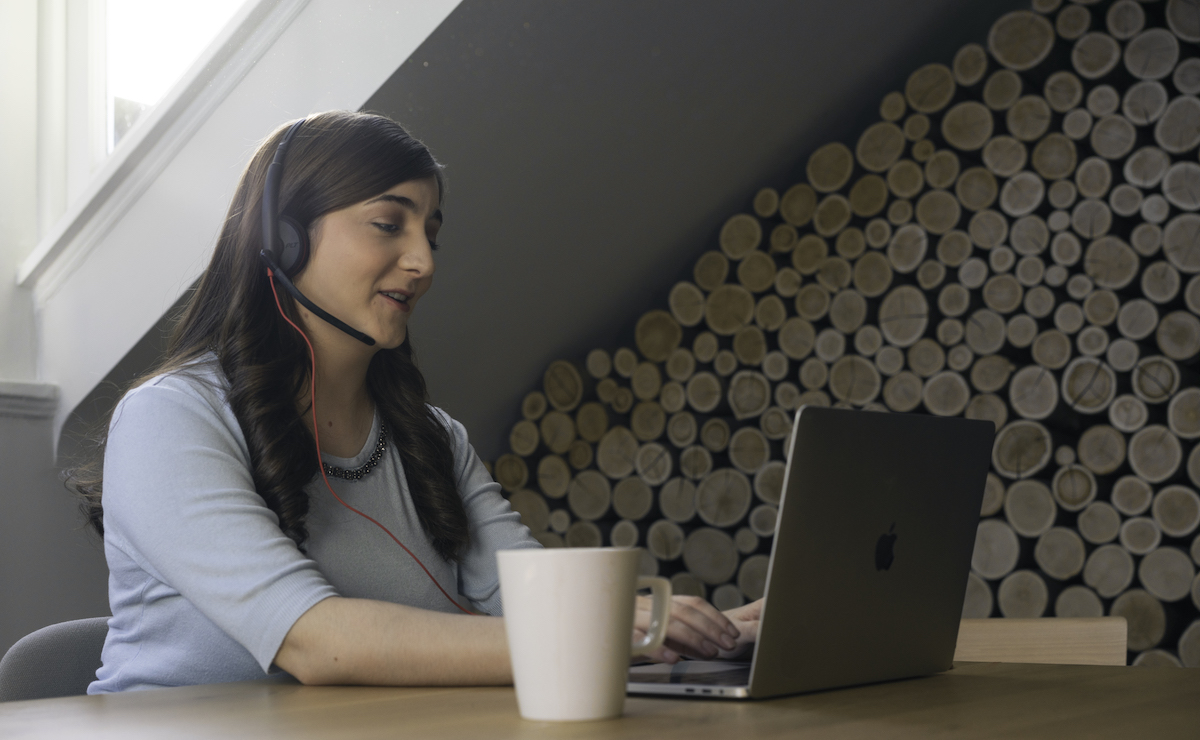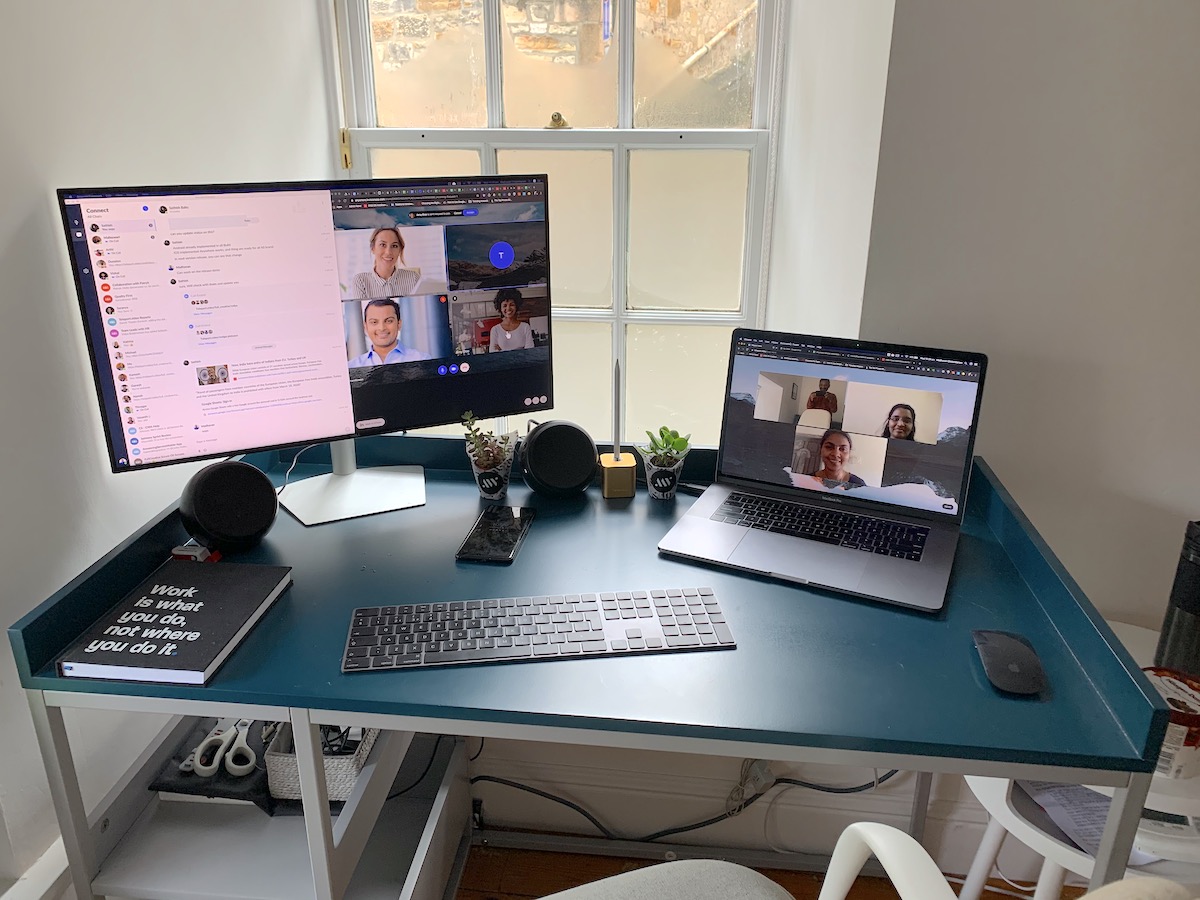Working Anywhere can open up businesses to a world of possibility. It can revitalise the way a company operates, with a more efficient and energised workforce.
But, that productivity only comes when your team feels comfortable in their work environment. A Buffer survey revealed 78% of telecommuters work primarily from home. That means educating your team in the best practices for working from home. Everyone has different requirements here. But there are some key design elements proven to encourage inspiration and increase team engagement.

1. Maximise comfort to optimise productivity
How you position your desk, chair and device can have a major impact on the way you work. In a traditional office environment, customising the layout of your personal space isn’t always easy. In fact, according to a 2017 Office Genie survey of office workers, 20% of workers felt their workplace environment hindered them from doing their job.
Fashionable furniture may be important, but ergonomic design is essential. When your team works from home, it’s your duty to provide them with the right resources. Advise them on the best practices for device and furniture positioning. By encouraging everyone to resolve minor layout issues in the design phase, you can help them maintain their health in the long-term.

2. Create the best lighting
Working in an area with poor visibility can contribute to vision problems, exhaustion, and irritability. According to a study by Scientific American, poor lighting can even lead to depression. Not only does that affect team performance, but it also prevents people from enjoying time outside of work.
A recent study by the Department of Design and Environmental Analysis at Cornell found that employees seated within 10 feet of a window reported an 84% decrease in eyestrain, headaches, and blurred vision symptoms. Those unable to work by a source of natural light should keep their home office space well lit with ‘natural’ white light bulbs.

3. Declutter your workspace
A study by researchers from Princeton University Neuroscience Institute found that clutter limits your brain’s ability to process information. To avoid the stress of constantly searching for things, encourage your team to remove all unnecessary items from their home workspace.
As Fraser Sutherland, Product Manager at Storage Vault said, “No one works better in mess. Surrounding yourself with reams of files, stacks of archive boxes and rows of half-drank coffees does absolutely nothing but suck the energy out of you.”
As a team leader, it’s your responsibility to educate, not dictate, on the best practices. That means encouraging the sharing of knowledge between team members. Consider creating a digital space dedicated to sharing tips and photos on how to layout a home office. This provides an insight into how different team members work while uniting them in a shared vision.

4. A dedicated workspace for dedicated work
The Office Genie survey also found that 74% of employees in the UK feel their workplaces lack spaces that encourage relaxation. Working from home, your team can customise their space to their own specifications. And central to that is a clear division between your ‘work’ and ‘relaxation’ spaces. Not only does this clarity increase efficiency in the workspace, but it also increases contentment outside it.
Having a work-free space is also crucial for inspiration. But to truly step out of the work mindset, your team must be able to disconnect. As Colin McLetchie, President of Five Ways Forward, said in a recent interview: “Social media and texting aren’t breaks. Knowing when to walk away to refresh the brain, the body, the spirit… is the smart move for doing high quality and accurate work – whatever that work is.”

5. Design contentment to power creativity
The home office is more than a place to work; it’s also a place to develop as a person. Without the restrictions of a corporate office, you can design the space in a way that encourages growth. There’s no set standard for this – it’s about designing the space to your own ideal. But there are key features proven to support strong mental health.
Numerous studies have shown that adding plants to a workspace can have a dramatic impact on your mental wellbeing. Plants increase indoor oxygen levels and clean the air. Not only that, but a 2010 study by the University of Technology, Sydney found plants can decrease feelings of depression by up to 58%.
Not every element has to be practical – it’s important to make room for items that inspire you and lift your spirits. The difference can be dramatic. A study by the Journal of Experimental Psychology found that offices devoid of pictures, souvenirs or personal effects are “the most toxic space.”

Encourage inspiration Anywhere
Effectively working from home requires optimising your environment to maximise health, happiness and productivity. Of course, a safe and practical setup is essential to working productively. But it’s just as important to integrate inspiration into your setup. That inspiration is vital for the team as a whole, pushing members to find dynamic solutions to challenges
In short, where creativity and self-expression are allowed to flourish, inspiration will surely follow.


